Janani Balaji
Knowledge Graph-based Session Recommendation with Adaptive Propagation
Feb 17, 2024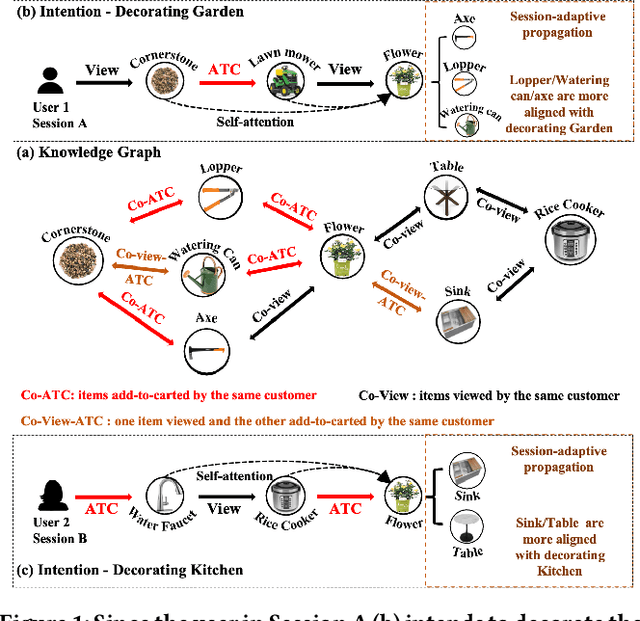
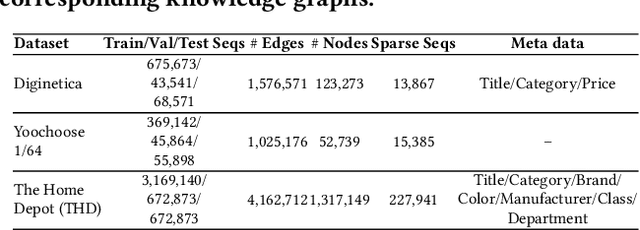
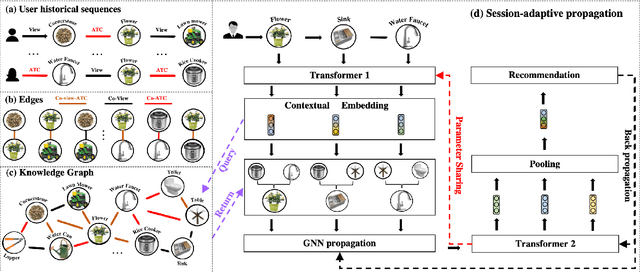
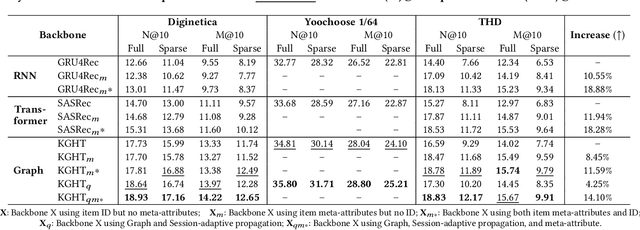
Abstract:Session-based recommender systems (SBRSs) predict users' next interacted items based on their historical activities. While most SBRSs capture purchasing intentions locally within each session, capturing items' global information across different sessions is crucial in characterizing their general properties. Previous works capture this cross-session information by constructing graphs and incorporating neighbor information. However, this incorporation cannot vary adaptively according to the unique intention of each session, and the constructed graphs consist of only one type of user-item interaction. To address these limitations, we propose knowledge graph-based session recommendation with session-adaptive propagation. Specifically, we build a knowledge graph by connecting items with multi-typed edges to characterize various user-item interactions. Then, we adaptively aggregate items' neighbor information considering user intention within the learned session. Experimental results demonstrate that equipping our constructed knowledge graph and session-adaptive propagation enhances session recommendation backbones by 10%-20%. Moreover, we provide an industrial case study showing our proposed framework achieves 2% performance boost over an existing well-deployed model at The Home Depot e-platform.
Automated Discovery and Classification of Training Videos for Career Progression
Jul 23, 2019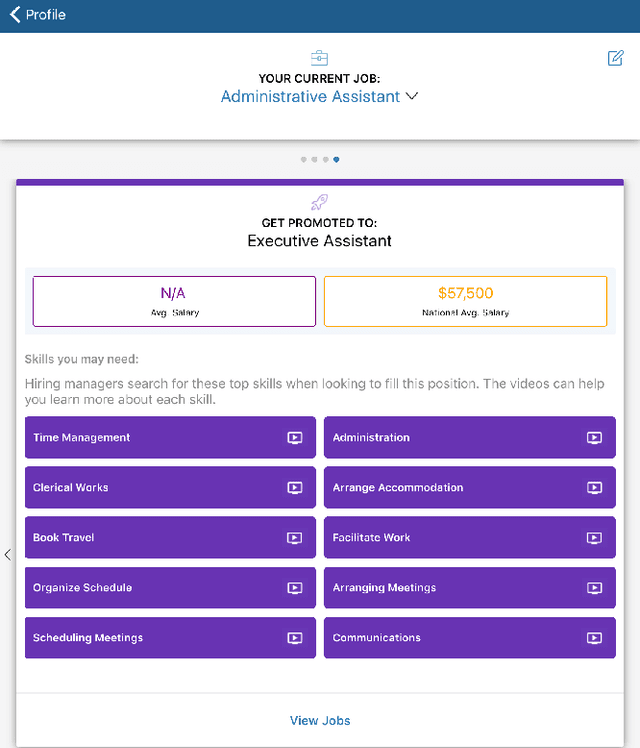
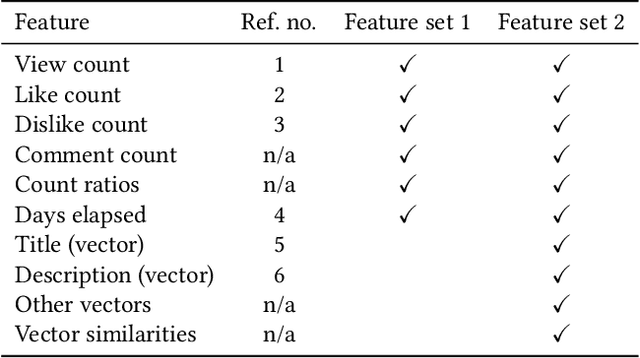
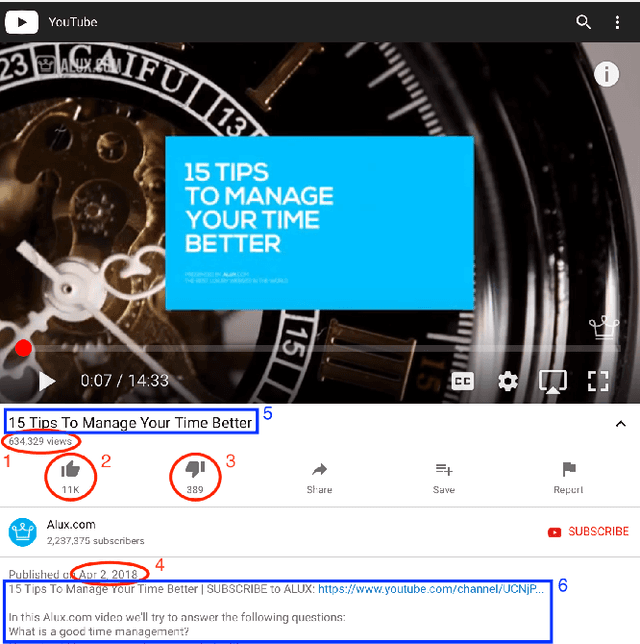

Abstract:Job transitions and upskilling are common actions taken by many industry working professionals throughout their career. With the current rapidly changing job landscape where requirements are constantly changing and industry sectors are emerging, it is especially difficult to plan and navigate a predetermined career path. In this work, we implemented a system to automate the collection and classification of training videos to help job seekers identify and acquire the skills necessary to transition to the next step in their career. We extracted educational videos and built a machine learning classifier to predict video relevancy. This system allows us to discover relevant videos at a large scale for job title-skill pairs. Our experiments show significant improvements in the model performance by incorporating embedding vectors associated with the video attributes. Additionally, we evaluated the optimal probability threshold to extract as many videos as possible with minimal false positive rate.
An Ensemble Blocking Scheme for Entity Resolution of Large and Sparse Datasets
Sep 21, 2016
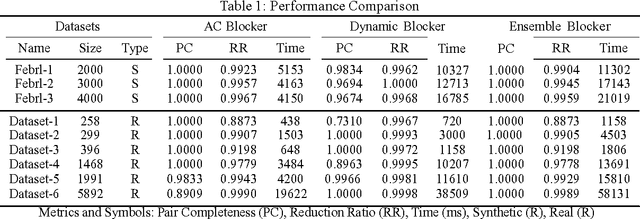
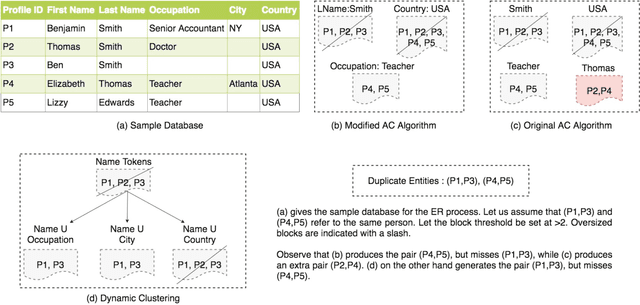
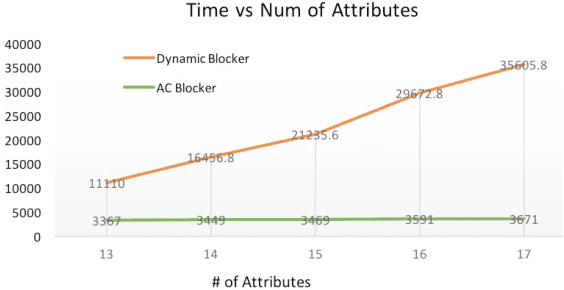
Abstract:Entity Resolution, also called record linkage or deduplication, refers to the process of identifying and merging duplicate versions of the same entity into a unified representation. The standard practice is to use a Rule based or Machine Learning based model that compares entity pairs and assigns a score to represent the pairs' Match/Non-Match status. However, performing an exhaustive pair-wise comparison on all pairs of records leads to quadratic matcher complexity and hence a Blocking step is performed before the Matching to group similar entities into smaller blocks that the matcher can then examine exhaustively. Several blocking schemes have been developed to efficiently and effectively block the input dataset into manageable groups. At CareerBuilder (CB), we perform deduplication on massive datasets of people profiles collected from disparate sources with varying informational content. We observed that, employing a single blocking technique did not cover the base for all possible scenarios due to the multi-faceted nature of our data sources. In this paper, we describe our ensemble approach to blocking that combines two different blocking techniques to leverage their respective strengths.
 Add to Chrome
Add to Chrome Add to Firefox
Add to Firefox Add to Edge
Add to Edge